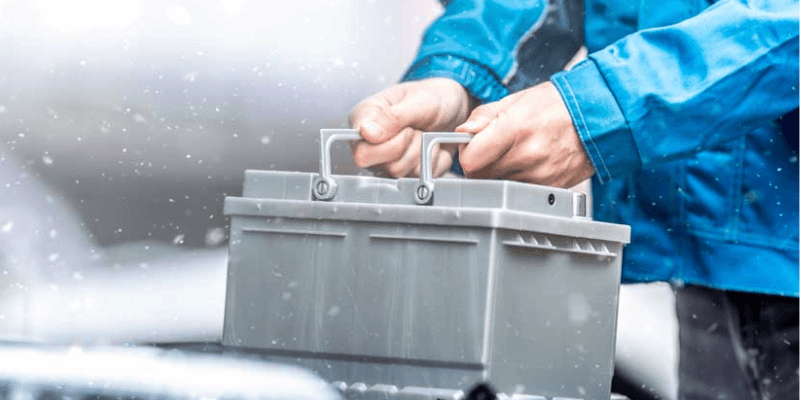Key Takeaways:
- Batteries prefer moderate temperatures for optimal performance.
- Cold temperatures can cause lithium plating, pressure build-up, and electrolyte freezing.
- Heat can lead to overcharging, venting, and reduced capacity.
Ever wondered how your battery performs in extreme temperatures? Let’s explore how batteries behave in extreme temperatures today. You might be surprised!
Charging Problems at Extreme Temperatures
Cold Temperatures
We’ve all heard that batteries love room temperature, right? But do you know what happens when you charge your battery in the cold?
- Lithium-Ion Batteries: Heard of lithium plating before? It’s like if the lithium-ion battery gets too cold, lithium ions will hang out on the anode. Who knows, they might even cause a short circuit party. And if the electrolyte gets too cold, it could freeze and crack the case. Ouch!
- Flooded Lead-Acid Batteries: These guys are like a snow cone in winter. The electrolyte can freeze and expand, and boom! The case might get damaged.
- Nickel-Based Batteries: Cold weather can slow down their chemical reactions, leading to pressure build-up. It’s like when you try to blow up a balloon too fast!
Hot Temperatures
Charging in hot weather? Not a great idea, either.
- Lithium-Ion Batteries: They can take the heat, but too much, and they might start gasping for air and venting. This can shorten their life. Just like when you sprint too fast and need to catch your breath.
- Nickel-Based Batteries: Heat can make these batteries confused about how charged they are, leading to overcharging. It’s similar to when you overindulge in candy and end up feeling awful.
- Flooded Lead-Acid Batteries: High temperatures can make these batteries overcharge, speeding up their aging.
Discharging Problems at Extreme Temperatures
Cold Temperatures
Discharging in the cold can be a real downer. Here’s why:
- General Performance: Batteries have a tough time in the cold, with higher resistance causing capacity drops. Imagine your battery is like a superhero with half its powers at 0°F.
- Recovery: Heat can cut battery life in half, like when you only get half the ice cream scoop you wanted. Not cool!
Hot Temperatures
Think hot weather is easier? Not so fast.
- Reduced Capacity: Heat can seriously shorten battery life cycles. Some batteries can only provide 50% of their capacity at 113°F.
Charging and Discharging Temperature Ranges
Batteries have their comfort zones. Stick to these ranges to keep your battery happy:
- Lithium-Ion Batteries: Charge from 32°F to 113°F, Discharge from -4°F to 140°F
- Lead-Acid Batteries: Charge from -4°F to 122°F, Discharge from -4°F to 122°F
- Nickel-Based Batteries: Charge from 32°F to 113°F, Discharge from -4°F to 149°F
Battery manufacturers might have custom solutions, but sticking to these guidelines can keep your battery in top shape.
Conclusion
Managing batteries in extreme temperatures is no walk in the park. By knowing battery’s limits in extreme temps to keep it running strong. A bit of smart care goes a long way!
Related Articles:

